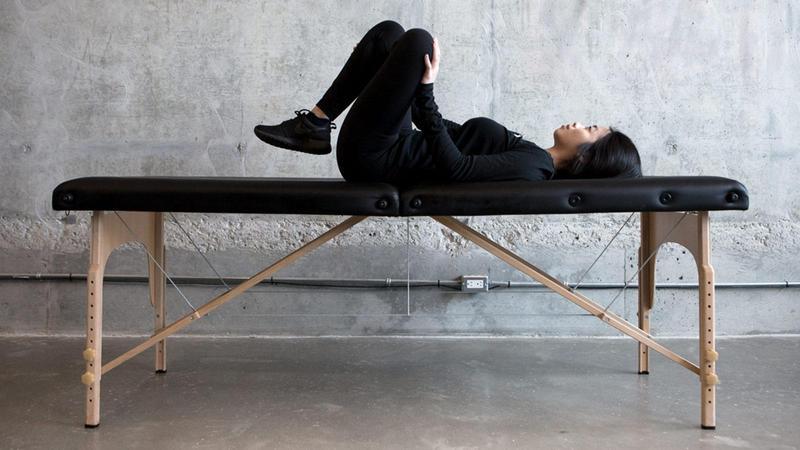
Work-related, exercise, and car accident injuries tend to be the leading causes of chronic back pain. Obesity (combined with chronic sitting) and stress can also increase your risk.
The truth is, it’s not important to discover the genesis of your back pain in order to treat it effectively.
Simply execute some simply exercise and tune up your lifestyle and watch the pain finally go away!
Sciatic Nerve Pain Exercises
Sciatic nerve pain is another common problem, and it can be quite excruciating. Sciatica results when your sciatic nerve gets pinched in your lower back. The pain is typically felt as originating in your buttock, radiating down your thigh.
Stretching exercises can help reduce sciatic pain. Your sciatic nerve runs through your piriformis, a muscle located deep in your glutes. If the piriformis gets too tight, it can impinge the sciatic nerve, causing pain, tingling, and numbness in your leg.
Sometimes, stretching your piriformis may be enough to reduce the pain. Four exercises to try include the following:
1. Piriformis Stretch
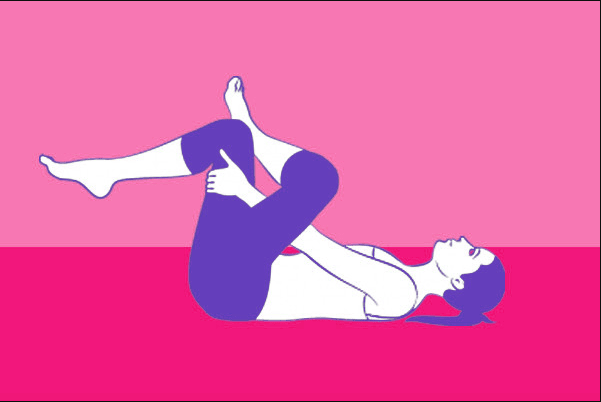
Laying on your back, place both feet flat on the floor with knees bent. Rest your right ankle over the left knee and pull the left thigh toward your chest.
Hold stretch for 30 seconds. Repeat on the other side.
Remember to keep the top foot flexed to protect your knee.
2. Seated Hip Stretch
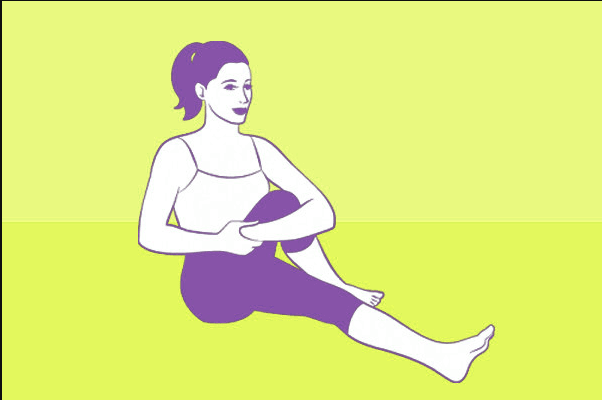
While in a seated position, cross your right leg over your straightened left leg.
Hug your right knee with your left arm, making sure to keep your back straight.
Hold this stretch for 30-60 seconds, and then repeat on the opposite side.
3. Pigeon Pose
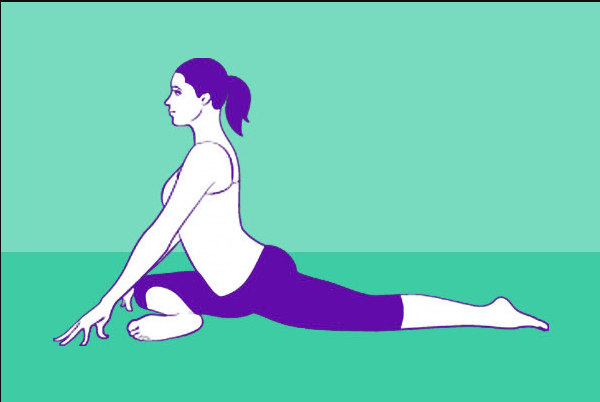
Start in Downward-Facing Dog pose with your feet together.
Draw your right knee forward and turn it out to the right so your right leg is bent and your left leg is extended straight behind you. Slowly lower both legs.
Hold the position for five to ten breaths, then switch to the other side.
4. Self-Trigger Point Therapy
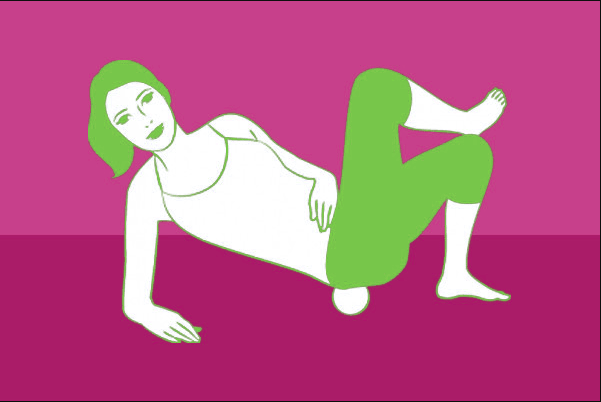
Performing self trigger-point therapy using a lacrosse or tennis ball can be very effective at delivering sciatica pain relief.
All you have to do is find a painful spot in the glutes, place the ball at that location and then relax your body into the ball.
Hold this position for 30-60 seconds or until you notice a significant reduction in pain. Move to the next painful spot. The total time spent on this exercise should be between 5-10 minutes.
Practicing these four exercises once or twice a day can definitely bring you much needed sciatica pain relief.
The video below also illustrates a simple one-minute daily stretching routine that can help reduce sciatic pain stemming from an overly tight piriformis muscle in your buttocks:
Other Treatment Options for Sciatica
Here is a lists of other treatment alternatives for sciatica, including the following:
Chiropractic care: In one 2010 study, 60 percent of people with sciatica who received chiropractic care three times a week for four weeks experienced the same degree of relief as those who ended up getting surgery.
Acupuncture: Research published in the Journal of Traditional Chinese Medicine found that 17 out of 30 patients with sciatica experienced complete relief with acupuncture. You may need about a dozen treatment sessions to see improvement.
Yoga: As reported in the featured article: “A study in the journal Pain reported that people with chronic back pain who practiced Iyengar yoga for 16 weeks saw pain reduced by 64 percent and disability by 77 percent. Although yoga’s effects on sciatica are less clear, gentle forms may be beneficial.”
Pilates: A recent Spanish study found that older women with back pain can reduce their pain, improve balance, and reduce risk of falling by adding Pilates to their physiotherapy routine. All of the 100 women in the study received 40 minutes of nerve stimulation and 20 minutes of massage and stretching twice a week. Half of them also did one hour of Pilates twice a week. At the end of the six-week long study, those taking Pilates reported greater improvements.
Trigger point massage: Trigger point therapy, where the therapist applies firm pressure to points on your piriformis, lower back muscles, and glutes, can help release the pressure and impingement on the sciatic nerve.
Topical preparations: Anti-inflammatory oils and liniments can also be helpful. Examples include St. John’s wort oil and cayenne pepper cream. Apply to the painful area two to three times a day.
Stand Up More Often
While maintaining proper posture when sitting can be helpful for avoiding pain in a variety of different areas, including your back, neck, and shoulders, an even better solution may be to avoid sitting altogether.
I struggled with persistent back pain for many years despite seeing many chiropractors, stretches and strengthening exercises, laser treatments, grounding, massage, and using an inversion table.
It wasn’t until I decided to experiment with standing as much as possible that I noticed significant improvement.
Paradoxically, standing initially would cause pain and it was difficult for me to stand in an hour lecture without pretty severe back pain. But by reducing my 12 to 14 hours of daily sitting to under one hour, my back pain vanished.
Now I typically sit for less than 30 minutes a day and have been free of low back pain for many months.
I stand most of the day on a 2 foot by 4 foot cushioned grounding pad that I designed. If you have a desk job, I highly recommend investing in a stand-up desk.
I’m so convinced of the benefits of standing up rather than sitting down that I’m in the process of providing employees at my office with stand-up desks, and cushioned grounding pads once we have them available. Below is the video I shot for our 18th anniversary showing my home office stand up desk.
This is part and parcel of the evidence that the human body was built for more or less continuous movement — not consistent strenuous activity, but gentle non-exercise activity and this includes simply standing. In other words, your body ceases to function properly when it is too still for too long. The evidence suggests sitting for just one consecutive hour is too long. Ideally, sitting should break up your movement, not the other way around.
Mind-Body Connection Matters
As reported by the Epoch Times, 75 to 80 percent of back pain cases will resolve on its own within two to four weeks, even without treatment. But you can certainly speed up your recovery.
As an initial step, when pain suddenly strikes, try to relax both your back and your mind. Applying ice can be helpful, as can getting acupuncture or chiropractic care.
And, while many fail to consider this, addressing your emotions is another important component.
Depression and anxiety tend to reduce or slow down your body’s innate capacity for self-healing, so when pain strikes, it may be a sign that you’ve let emotional difficulties and stress go unaddressed for too long.
Your brain, and consequently your thoughts and emotions, actually play a large role in your experience of pain. Your central nervous system “remembers” any pain that lasts more than a few minutes at the neuronal level.
Many people find adopting a yoga or meditation practice can significantly improve mental-emotional difficulties. I personally can verify that it has worked for me in profound ways.
Be the first to post a message!